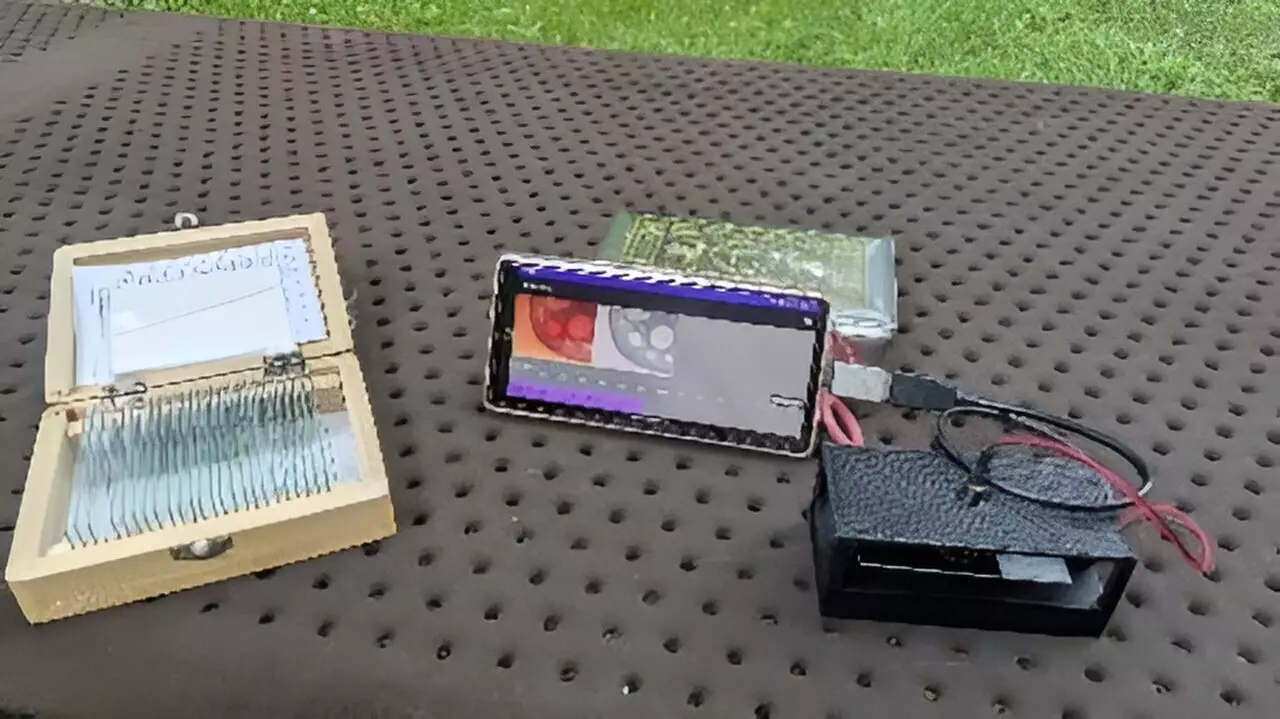In the sphere of biomedical research and diagnostics, pioneering advancements frequently herald significant transformations. A recent development from the Tokyo University of Agriculture and Technology unveils a smartphone-based digital holographic microscope that promises to democratize 3D measurement capabilities, making them more accessible for various applications—from education to healthcare in underserved areas. This innovative approach not only challenges the traditional bulky optical systems but also embraces the modern convenience of smartphones, bringing a fresh perspective to an age-old technology.
The landscape of optical microscopy has primarily revolved around substantial and expensive equipment that often requires intricate setups and substantial training to operate. Traditional digital holographic microscopes (DHMs) necessitate an array of optical components and typically rely on desktop computers for image processing and analysis. In contrast, the new smartphone-based solution offers a streamlined, portable, and cost-effective alternative. Research team leader Yuki Nagahama highlights the ingenious simplicity of the new design, which utilizes 3D printing for its optical structure and leverages smartphone computing for data processing.
The pivotal innovation revolves around the reconstruction of holograms directly on the smartphone, minimizing the need for external devices. This advancement marks a crucial turning point in making sophisticated microscopy tools more user-friendly, particularly in settings where resources are scant. By sidestepping the complexities associated with traditional systems, the researchers have initiated a potential shift in how microscopic investigations can be conducted, notably outside conventional laboratory settings.
One of the standout features of this new microscope is its ability to capture and reconstruct holograms almost in real-time. The user interface, designed for smartphones, integrates intuitive pinch gestures to zoom into the imagery, which further enhances user experience. Such interactivity can significantly aid educational purposes, enabling students to engage with live observations and fostering a deeper understanding of biological structures.
The design is anchored in functionality, catering to various environments, ranging from classrooms to remote healthcare facilities. The use of a lightweight optical housing engineered through 3D printing amplifies the portability of the entire system. This thoughtful engineering means that users can observe specimens anywhere, potentially transforming how we approach science education and diagnostics, particularly in regions lacking advanced medical equipment.
A major hurdle presented by previous smartphone-based DHMs was the limitation in processing power, which hindered real-time image reconstruction. The research team’s adoption of band-limited double-step Fresnel diffraction is a game-changing approach that reduces data points necessary for capturing diffraction patterns. This computational efficiency permits rapid reconstruction, achieving frame rates significantly higher than earlier iterations.
This shift towards utilizing smartphones as computing devices sheds light on a broader narrative—one where everyday technology is repurposed to solve complex scientific challenges. As smartphones become entrenched in daily life, their capacity for computational tasks such as hologram reconstruction showcases the potential of integrating advanced technologies into the hands of everyday users.
The researchers are not resting on their laurels, as they have plans to deploy deep learning algorithms to elevate the quality of the images produced. The challenges of unintended artifacts during hologram reconstruction represent a rich field for exploration, particularly when leveraging artificial intelligence to enhance clarity and accuracy. The potential to automate and refine this process could unlock even more robust applications in both research and diagnostic settings.
As the technology matures, it could see applications in medical fields such as the diagnosis of diseases that require sophisticated imaging techniques, including hematologic disorders in resource-challenged regions. The implications for education also cannot be overstated; students in remote locations might gain access to cutting-edge tools that previously would have been confined to well-furnished laboratories.
The advent of smartphone-based digital holographic microscopes stands as a testament to the ingenuity of researchers looking to merge technology with practicality. By making advanced microscopy tools more accessible and user-friendly, this innovation could revolutionize both educational paradigms and medical diagnostics across the globe. As the fields of science and technology continue to intertwine, we may well be witnessing the dawn of a new era where sophisticated analysis becomes as ubiquitous as the smartphones we carry in our pockets.

